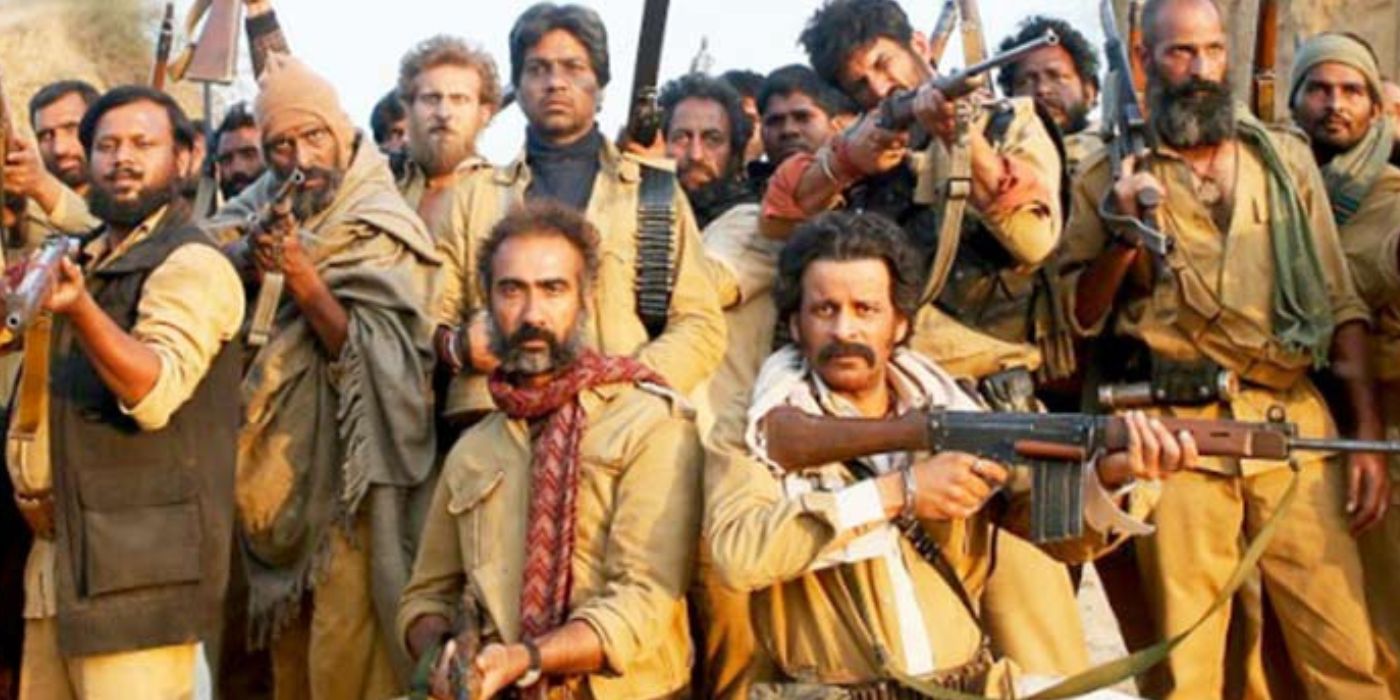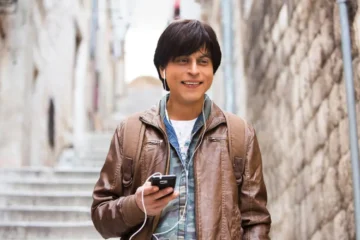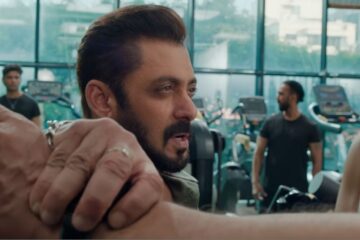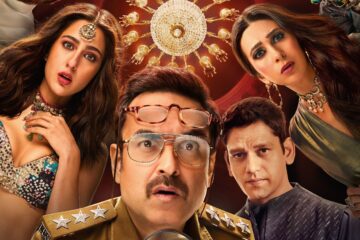Sonchiriya is a character study of complex individuals, seeking atonement in an unforgiving landscape that doesn’t give second chances.
In case you didn’t notice, we love Westerns. And if they come with a side order of desi masala, even better. Western-inspired cinema in India, often called “Curry Westerns,” was a defining trend in Hindi films from the 1960s through the 1980s. Around the same time that Clint Eastwood teamed with Sergio Leone for iconic Spaghetti Westerns, Bollywood found its own frontier groove with movies like Sholay and Khote Sikkay.
Just when we were about to throw away our cowboy boots and poncho, Bollywood said: “Jaata hai tu kahan re Baba!” — seriously, how infectious was early-career Shahrukh? But we digress, back to our story.
After a lull, that cowboy spirit has seen pockets of revival, often blending the frontier code of honor and revenge with local cultural flavors. In Sonchiriya, director Abhishek Chaubey and co-writer Sudip Sharma fully embrace that rugged Western essence—while also grounding it deeply in the dust-swept ravines of Chambal, circa 1975.
What emerges is an unflinching dacoit drama that breaks away from hackneyed Bollywood tropes of roguish outlaws prancing on horses or launching dramatic war cries. Instead, Sonchiriya gives us flawed men locked in cycles of violence who are desperate to atone for their sins—even if those sins are so deeply etched that redemption remains in doubt. It’s the universal Western conceit of “Do I have one last shot at doing something right?” reimagined for an Indian landscape where caste divides, oppressive patriarchy, and long-held superstitions weigh as heavily on these men as their guns.
A Bleak Landscape
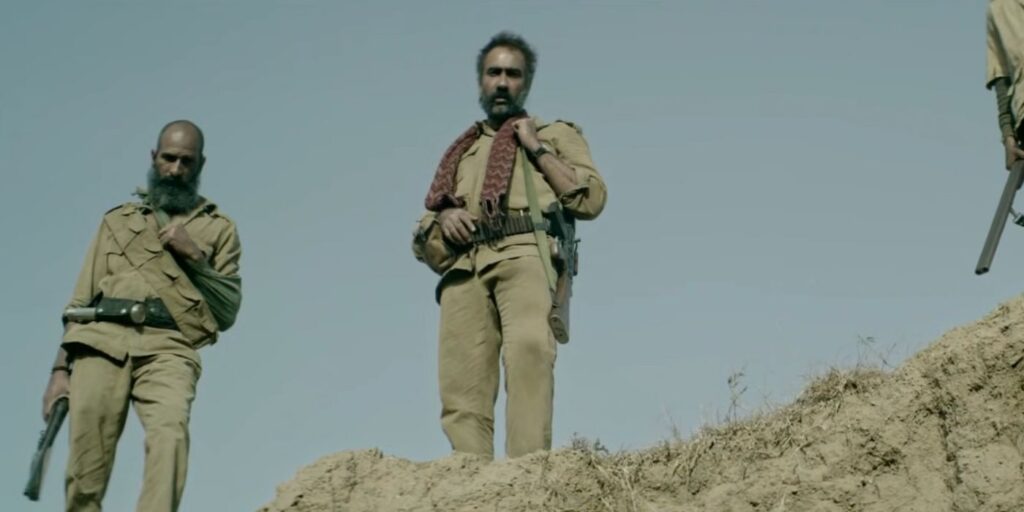
A fly buzzes around a decomposing snake while a ragged line of rebels trudges past. From the opening shot, it’s obvious Sonchiriya won’t romanticize its dacoits. There are layers that gnaw at the underlying tension, bubbling just beneath the surface.
A decaying snake is considered an omen of misfortune, yet in this land, misfortune has already made itself at home. The story quickly introduces us to Man Singh (Manoj Bajpayee), an aging leader whose stoicism conceals a history of bloody misdeeds, and his two lieutenants: Lakhna (the late Sushant Singh Rajput), disillusioned and nursing crippling guilt, and Vakil Singh (a brilliant and criminally underrated Ranvir Shorey), whose fierce temper masks his own internal strife. Meanwhile, a vengeful lawman named Gujjar (Ashutosh Rana) prowls the ravines like a predator seeking closure for old wounds.
Comparisons to Sam Peckinpah’s brand of raw storytelling are inevitable—like Peckinpah, Chaubey sets the stage with bracing violence and looming dread, ensuring viewers realize this world offers no easy escapes for men shackled by their own transgressions. As with many Westerns, Sonchiriya understands that it’s not merely about shootouts or swaggering gunmen. Instead, the film concerns itself with the moral weight behind pulling the trigger. Looming over the dryness of the Chambal is the question: Can a man—for all the things he’s done—redeem himself by doing the right thing just once?
Flawed Heroes in Search of Atonement

At the heart of that question is Lakhna. Much like the antiheroes of classic Westerns who realize their once-glorified outlaw life no longer holds meaning, Lakhna carries the burden of having accidentally killed children in a past ambush. Tainted by guilt and eager to break from the gang’s destructive cycle, he tries to help Indumati (Bhumi Pednekar), a desperate woman determined to save a young girl. Even as Lakhna’s conscience awakens, loyalty pulls him in the opposite direction. The simmering tension between him and Vakil Singh escalates into a pursuit that underscores how fractured loyalty, and not just outside threats, can tear a gang apart. Adding to this is the policeman Gujjar, whose hatred for these dacoits is as personal as it is professional. Each man grapples with moral debts they can’t easily repay, forging an uneasy bond of guilt that roams the ravines with them.
As the story shifts from bandit raids to a chase driven by moral imperatives, Chaubey and Sharma anchor the narrative in the Western tradition: flawed men realizing they cannot outrun the consequences of their past. Guns may settle scores physically, but they do little to quiet the ghosts in each character’s head. The dusty gorges and endless horizon echo the old Western axiom that “there’s nowhere to hide,” not from the law and certainly not from one’s own conscience.
Also Read: Sector 36: A Lackluster Crime Thriller
Rethinking the ‘Dacoit Drama’
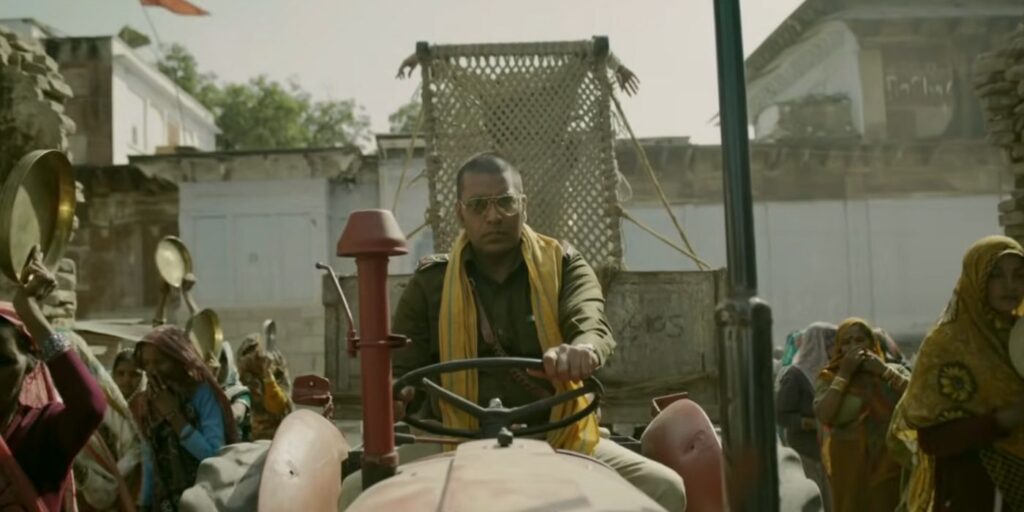
Sonchiriya represents a departure from the mainstream. Earlier Bollywood dacoit sagas often reveled in flamboyant villains who reveled in their terror. Sonchiriya rejects that. The men here exhibit a bone-deep weariness. They talk of “rebels” instead of “bandits,” but that label is overshadowed by the regret etched in their eyes. Scenes featuring illusions or hallucinations highlight the torment each one shoulders—though, at times, the film’s emphasis on symbolic imagery verges on heavy-handed. Where a typical mainstream potboiler might indulge big musical set-pieces or equine-driven charges, Sonchiriya is unrelentingly grounded, intensifying the sense that every bullet is more burden than triumph.
Sushant Singh Rajput’s Lakhna stands out for the way he internalizes that struggle. Whether quietly absorbing a moment of horror or trying to save a child from the cycle of violence that trapped him, Rajput embodies a deeply compassionate man whose savage environment rarely allows for empathy. While Shorey’s Vakil bellows with the ferocity reminiscent of older, more theatrical dacoit roles, his rage is ultimately couched in heartbreak—he’s a man too far gone to admit he’s wrong. Supporting players like Pednekar, who fights her own battles in a patriarchal setting, emphasize how men aren’t the only ones longing to be free from societal chains. And then there’s Bajpayee’s Man Singh, the gang’s once-fearsome patriarch who now struggles to find a purpose beyond the gun, hauntingly aware his time is nearly up.
The Western Lens, Indian Soul
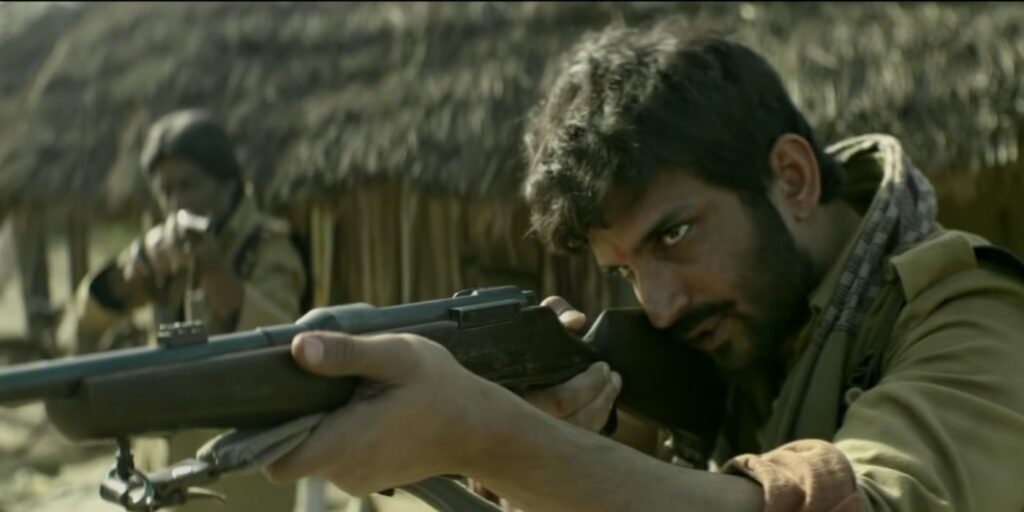
In the classic Western mold, redemption isn’t guaranteed. The land is bleak, the code is unforgiving, and the best you can do is try to rectify the path you’ve long strayed from. Sonchiriya channels that tradition, yet weaves in caste oppression, patriarchy, and bureaucracy—issues distinctly rooted in the Indian experience. The result feels like a metaphoric mirror: just as a rattlesnake or a vulture in an American Western might symbolize fate, a decaying snake in Chambal underscores doom.
Chaubey’s direction is often lyrical. Cinematographer Anuj Rakesh Dhawan frames the ravines in a washed-out palette of browns and grays, emphasizing both desolation and moral ambiguity. Instead of horses and John Wayne bravado, we get dacoits who trudge across rocky grounds, weighed down by sin. Instead of a clear-cut showdown between the heroic sheriff and the band of villains, we see a policeman as flawed and vengeful as the men he pursues.
A Tradition of Frontier and Forgiveness
Like many Westerns that revolve around flawed men seeking a sliver of grace, Sonchiriya portrays violence not as a sign of machismo but as a tragic necessity. At times, the narrative can feel self-conscious in its quest to be “real” and “gritty,” and the pacing sometimes stalls under all the heavy contemplation. Yet the film’s deeper beats—men seeing illusions of their victims, hearing voices that remind them of what they’ve done—reflect a truly introspective approach to the cowboy ethos. It’s a distinctive take that resonates with anyone who grew up on Westerns about men on the edge of civilization, searching for one noble act to redeem the weight of their sins.
The heartbreak is that for many of these dacoits, that one act may never be enough. Still, as Lakhna tries to ensure at least one innocent life is saved in the midst of all this carnage, the film suggests that glimmers of hope can shine in the harshest desert. That unwavering desire to do right—no matter how deep in the wrong you’ve been—is precisely what elevates this modern-day Western.
So even as guns roar and dust swirls, Sonchiriya centers on a question as old as the Western genre itself: Can a flawed man outrun his past and find redemption on an unforgiving frontier? By reframing that age-old query through the lens of Indian dacoits, Chaubey delivers a film that’s both culturally rooted and universally relatable—a dusty road to potential salvation for all those battered souls who once believed in the gun.

